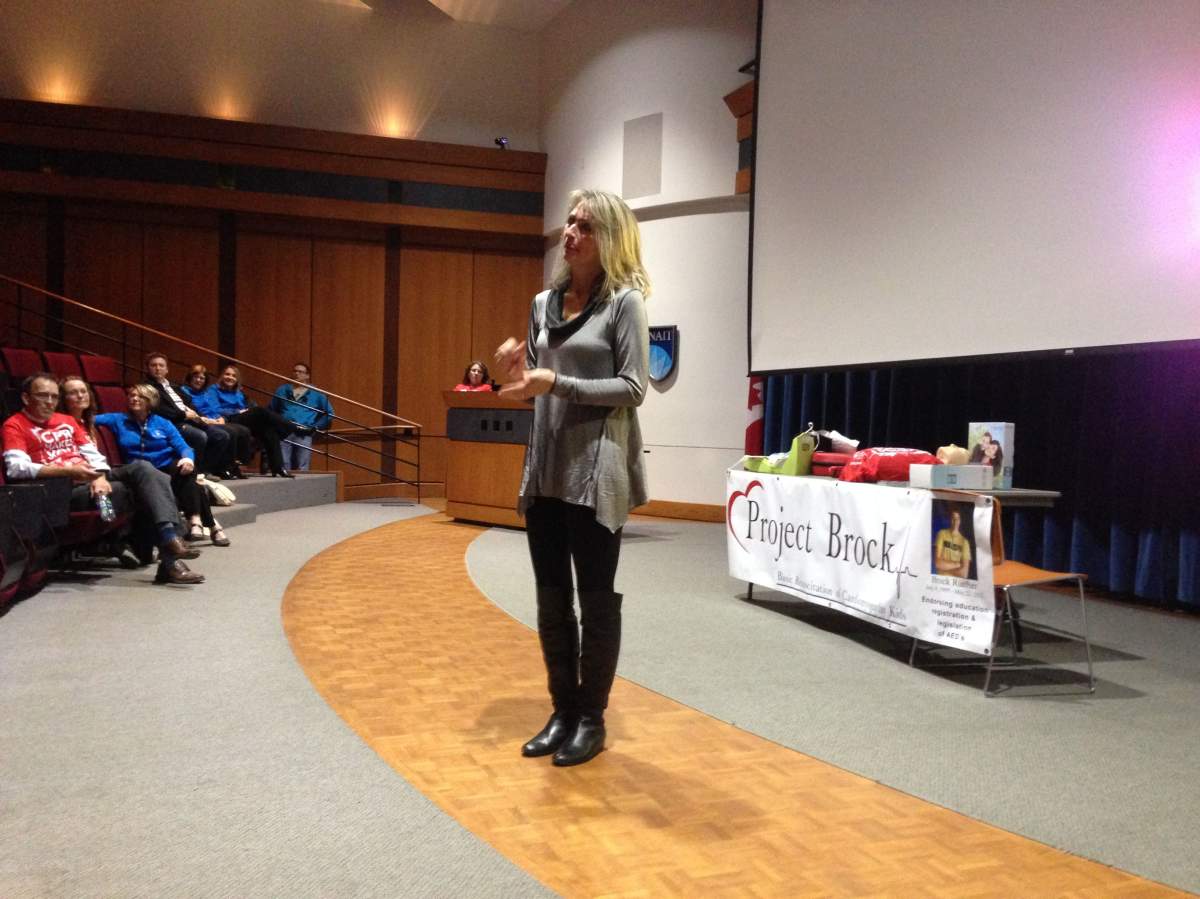EDMONTON – Kim Ruether is on a mission to educate young people about using an Automated External Defibrillator (AED), in the hopes of preventing others from losing their loved ones in the same way she lost her son Brock.

“Brock was a very athletic, kind, generous, wonderful boy,” shares Ruether.
On May 22, 2012, Brock collapsed at volleyball practice. He was 16-years-old.
“One of the teachers – who’s a family friend – phoned and said that he had collapsed, or tripped, and he was laying on the gym floor and he wasn’t breathing properly.”
Ruether and her husband arrived at the hospital and waited for the paramedics to bring Brock there, not anticipating how serious the situation was.
“The EMS people were wheeling him in on a stretcher and they were doing CPR and my husband and I were just totally in shock.”
Ruether and her family were stunned.
“Who ever assumes that a 16-year-old is not going to survive?” she asks, tears rolling down her cheek.
After Brock’s death, Ruether began researching sudden cardiac arrest in youth and tried to get more information about the circumstances surrounding her son’s last few moments.

Get weekly health news
“It was discovered that, in the 911 call, the 911 dispatcher told them to get the AED that was hanging on the wall right outside the gym doors in case they needed it later. So, it was put on the floor beside him, but then they never said to use it, and nobody knew how important it was to shock him. “
“I decided that something had to be done to raise awareness, so that people understand how many of these young athletes are collapsing and dying,” says Ruether.
“If an individual dials 911, starts CPR and has an AED by the patient’s side within three minutes or less, chances of survival increase up to 75 per cent,” explains Mike Hoffman, with the Heart and Stroke Foundation.
“It’s not an old person’s disease,” he adds. “It can happen to anyone; young or old, healthy or not healthy.”
So, Ruether has made it her mission to educate people about AEDs and push for legislation that would see AEDs in every public facility across Canada.
“I have been writing… to Stephen Harper, to Alison Redford, all of our local MLAs, I’ve met with representatives from the Education ministry, and I’m trying to get movement started to get it legislated so AEDs have to be put in every public access facility and school.”
Meanwhile, Ruether will keep giving presentations at schools to raise awareness and dispel fear associated with defibrillation.
“If we can start doing presentations and getting skill drills in our schools with the younger kids, by the time they graduate, it’ll be just a given,” she says. “They’ll be comfortable; kids don’t have the same fear we have as adults.”
The fear, says Hoffman, is unwarranted.
“No one can be harmed or hurt by an AED.”
Hoffman adds that AEDs are simple to use.
“Anyone can operate an AED. It is getting over that bump or that hurdle, and understanding that it is there to help you, and it is there to actually walk you through. It has voice prompts telling you what to do.”
Ruether urges people to push away their fear, and act immediately when help is needed.
“It’s so important to act,” she stresses. “Dead is dead. If you don’t act, they’re going to be dead.”
View the Heart and Stroke Foundation’s new CPR awareness video ‘The Undeading’ below:






Comments